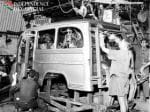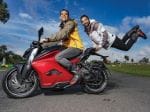Mahindra is attempting a Mahindra-like turnaround with Classic Legends. Can Jawa, Yezdi and BSA finally find their way?
Classic Legends has a mammoth task ahead, and it is in desperate need to crack the Indian consumer. Focusing on a smaller but premium biking audience, it has now readied a war chest of Rs1,000 crore
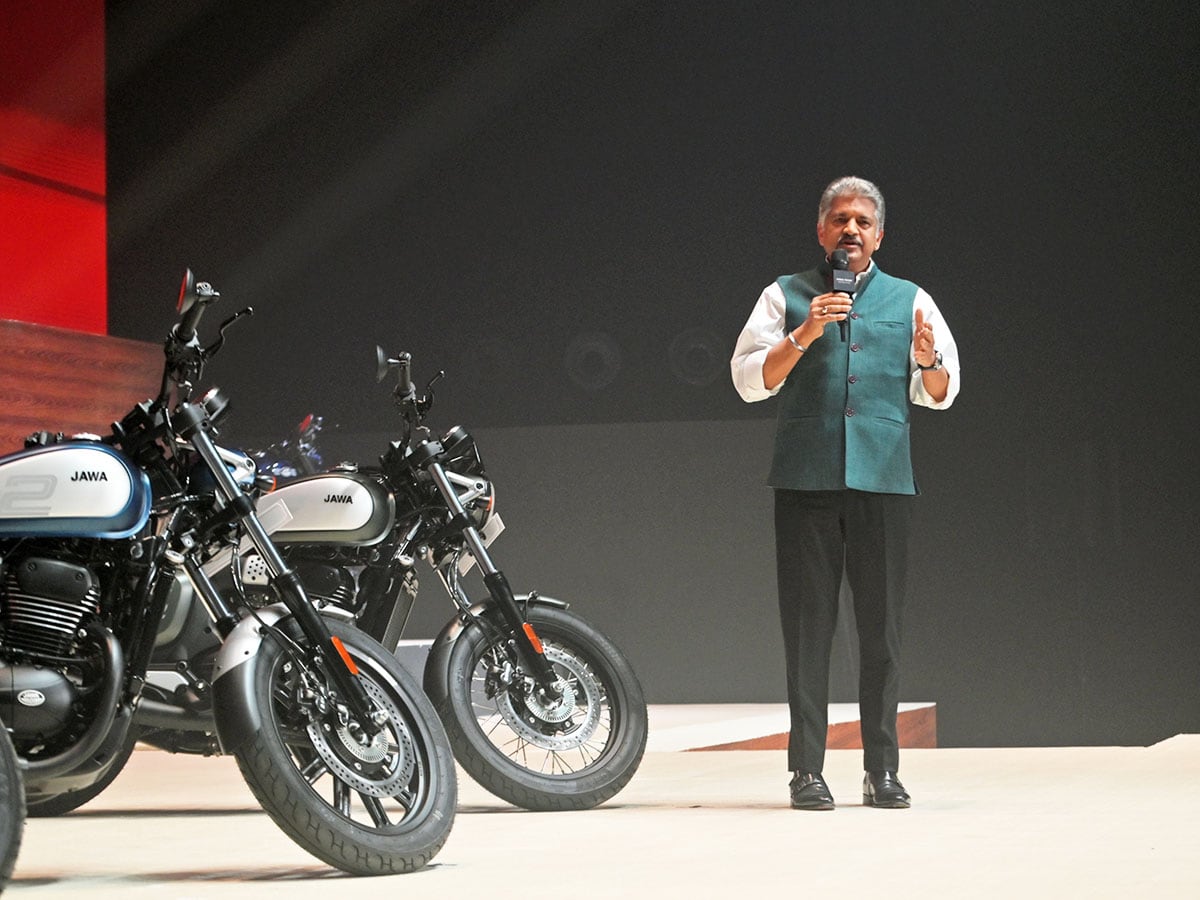 “When you ride the Jawa, you're telling people that you refuse to be suppressed, you refuse to be oppressed,”, Anand Mahindra, chairman of Mahindra & Mahindra Ltd., said during a launch event of the Yezdi Jawa Motorcycles Jawa 42 FJ motorbike in Mumbai, India, on Tuesday, Sept. 3, 2024. Image: Indranil Aditya/Bloomberg via Getty Images
“When you ride the Jawa, you're telling people that you refuse to be suppressed, you refuse to be oppressed,”, Anand Mahindra, chairman of Mahindra & Mahindra Ltd., said during a launch event of the Yezdi Jawa Motorcycles Jawa 42 FJ motorbike in Mumbai, India, on Tuesday, Sept. 3, 2024. Image: Indranil Aditya/Bloomberg via Getty Images
Of course, Mahindra knows that better than anybody else. The Thar, an SUV manufactured by Mahindra, for instance, traces its origin and design to the iconic CJ series of Jeep that the automaker has been manufacturing since 1945. The new generation Thar, when launched in 2021, went on to redraw Mahindra’s fortunes for good, propelling the automaker to the country’s fourth largest, close on the heels of Tata Motors. Today, the SUV has achieved something of a cult status, which prompted Mahindra to build a next-generation variant before launching it in August.
Still, Mahindra’s reference wasn’t about the Thar or the group’s remarkable comeback in the automotive sector. Instead, it was about Classic Legends, a company that the group has set up to focus on a niche biking segment, bringing back the likes of Jawa, Yezdi and BSA into the Indian market, after they folded up many decades ago.
“We stand before you, running a marathon,” Mahindra told a room of media persons. “We may fall, we may slip. But we will rise, and we'll keep on running. We’re running a marathon.” That sentimental appeal and a war cry of sorts from the 69-year-old with an enormous following on social media may be one thing, but Mahindra knows that Classic Legends has a mammoth task ahead, and it is in desperate need to crack the Indian consumer, who hasn’t been entirely convinced by the products from the bike maker’s stable.
In the world’s largest two-wheeler market, Classic Legends corners about 0.19 percent of the market, selling only a little over 2,000 vehicles a month. That number pales in comparison to the likes of relative newcomers such as Ola Electric which retails over 27,000 units a month, while Royal Enfield, Classic Legends’ closest competitor, sells as many as 25 times more vehicles a month—in August, for instance, Royal Enfield sold 54,810 units, with Hero MotoCorp, as the largest two-wheeler maker, at 258,516 units, according to the Federation of Automobile Dealers Association.
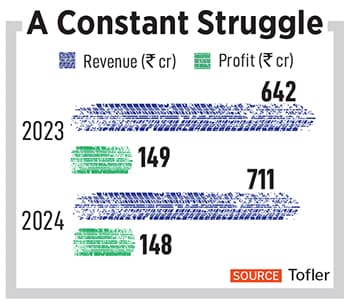
Mahindra, which consciously chose to stay away from commuter motorcycles to focus on premium motorcycles, owns 60 percent of Classic Legends that sells Jawa, Yezdi and BSA in India and the global markets. Jawa and Yezdi once held celebrity status in India, when motorcycles and cars were scarce in the country, with BSA’s 1942 BSA WA 500 cc bike featuring in the blockbuster movie Sholay. “We are privileged at Classic Legends to have the opportunity to both resurrect an old brand, and to build new stories and new history,” Mahindra added.
Resurrection Gone Awry
Still, the resurrection has been something of a challenge for Mahindra, and Classic Legends, six years since it began attempting it.Its relaunch in November 2018 saw huge fanfare, with the company’s website even crashing due to demand. It had gone to the market with three variants, the Jawa, Jawa Forty-Two and the Jawa Perak bobber. The Jawa and Jawa Forty-Two retailed at Rs1.64 lakh and Rs1.55 lakh, respectively, while the Perak was priced at Rs1.89 lakh. Also read: Mahindra is going big on electric vehicles. How long before it catches up?
In a year since its launch, the company sold some 50,000 bikes, averaging around 4,200 units a month. However, a few months later, Covid-19 came as a dampener.
“In our perfect world, Covid-19 played an absolute damage,” Boman Irani, co-founder of Classic Legends and chairman of Rustomjee Group, tells Forbes India. Irani’s father owned Ideal Jawa, a company that made Jawa bikes in India in the 1970s. “Initially, when we launched in 2018, we had bookings for 100,000 motorcycles. Our website crashed and I remember the euphoria. We took some time to come up with the motorcycle or rather start delivering young because 100,000 was too much for us to serve and then Covid-19 hit us in March.”
Covid-19 brought India’s automobile sector to a standstill, with production and sales significantly stalled, followed by a global shortage of semiconductors that led to delays in delivery in the sector. For Mahindra, for instance, many of their vehicles saw waiting periods of up to 24 months. But the subsequent years have also been exuberant for the sector, with sales hitting record numbers.
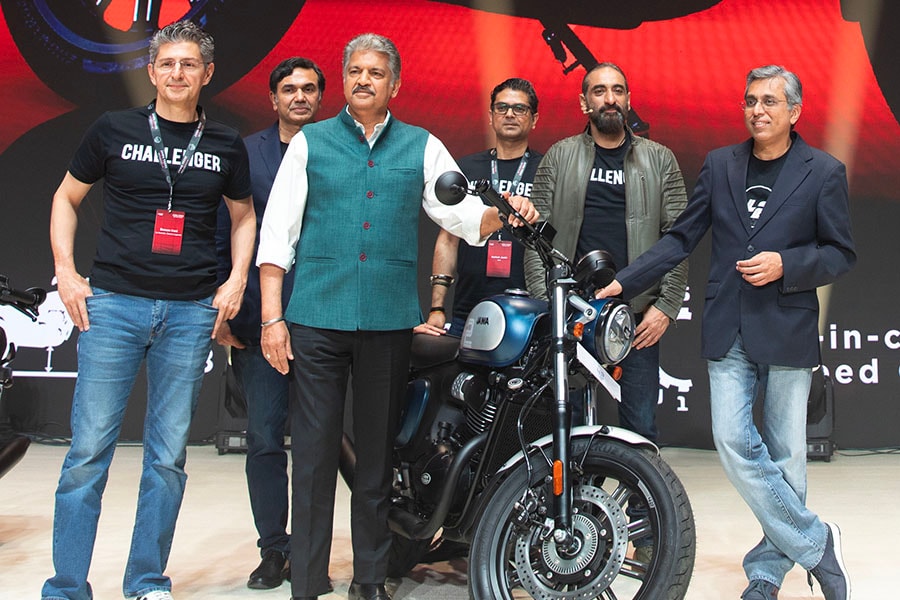 From left: Boman Irani of Rustomjee Group, Rajesh Jejurikar, executive director, Mahindra & Mahindra, Anand Mahindra, Ashish Joshi, CEO of Classic a legends, Anupam Thareja, Founder and Managing Director at Phi Capital and Anish Shah, Group CEO, Mahindra Group. Image: Courtesy Mahindra Group
From left: Boman Irani of Rustomjee Group, Rajesh Jejurikar, executive director, Mahindra & Mahindra, Anand Mahindra, Ashish Joshi, CEO of Classic a legends, Anupam Thareja, Founder and Managing Director at Phi Capital and Anish Shah, Group CEO, Mahindra Group. Image: Courtesy Mahindra GroupFor Classic Legends, though, the euphoria in the sector couldn’t quite translate to sales even though the brand had gone on to launch other legacy brands, the Yezdi and BSA, during the Covid era. The company had launched BSA, previously known as Birmingham Small Arms (BSA), in the UK in 2021, in its attempt to target the global market after the company shut down production in 1973.
That launch was followed by the re-launch of the Yezdi brand in India in 2022 with the lineup including the Yezdi Roadster, the Yezdi Scrambler and the Yezdi Adventure.
“While the initial excitement around the relaunch of Jawa and Yezdi created a buzz in the market, the sales figures have not reflected sustained demand,” Harshvardhan Sharma, head of auto retail practice at Nomura Research Institute, says. “According to industry data, Jawa motorcycles sold over 50,000 units in FY20, but sales plateaued in subsequent years, with FY23 estimates showing a yearly sales figure of around 35,000 units. In comparison, Royal Enfield has dominated the mid-size motorcycle market (250 cc to 500 cc) with annual sales crossing 800,000 units during the same period.”
In the country’s premium biking segment, Royal Enfield enjoys something of a cult status with as much as 90 percent market share as of 2022, while Classic Legends' share stood at around 6 to 7 percent. That’s a tough market to crack for Classic Legends, especially with Royal Enfield having solidified its brand through decades of customer loyalty, an extensive dealer network with over 4,100 dealerships, and a robust service infrastructure. Also read: From an electric Thar to five other EVs, why Temasek is betting on Mahindra's electric ambitions
Then, Jawa also suffered due to long waiting periods for its vehicles, with the average waiting period for a Jawa bike going up to nine months, resulting in customer frustration and cancellations. “For Jawa and Yezdi to challenge Royal Enfield, their brand potential must be aligned with critical improvements in after-sales service, product durability and supply chain efficiency,” adds Sharma of Nomura. “The premium bike segment in India is expected to grow at a CAGR of 8 percent by 2026, and tapping into this trend will require consistent focus on customer satisfaction, product innovation and brand differentiation.”
A History to Hold On
Last week, Classic Legends launched the Jawa 42 FJ, priced at Rs1.99 lakh to take competition head-on, which includes the likes of the Royal Enfield Hunter and the Honda H’ness, and is categorised as a neo-classic bike by the company. Jawa 42’s launch came a few weeks after the launch of the BSA Gold Star on August 15.“Now the range is complete,” says Anupam Thareja, another co-founder of Classic Legends. “The segmentation of the market is complete. We have got the product; we have got the distribution, and you will see the disruption.” The company has categorised its bikes into three segments—classics, neo-classics and customs, with Jawa, Yezdi and BSA as the brands.
The name Jawa traces its origin to combining the first two letters of Janicek, the founder of the brand, and Wanderer, the company that Janicek had bought in Germany from Winklhofer & Jaenicke, along with the design and tooling for the new Wanderer 500 motorcycle. The company started by making the Jawa 500 OHV.
By 1933, the company launched the Jawa 175, which emerged popular in Czechoslovakia before the government nationalised the company in 1948. The nationalisation scheme also merged Jawa with Czech armaments manufacturer-turned-motorcycle maker CZ, creating a single brand, Jawa-CZ.
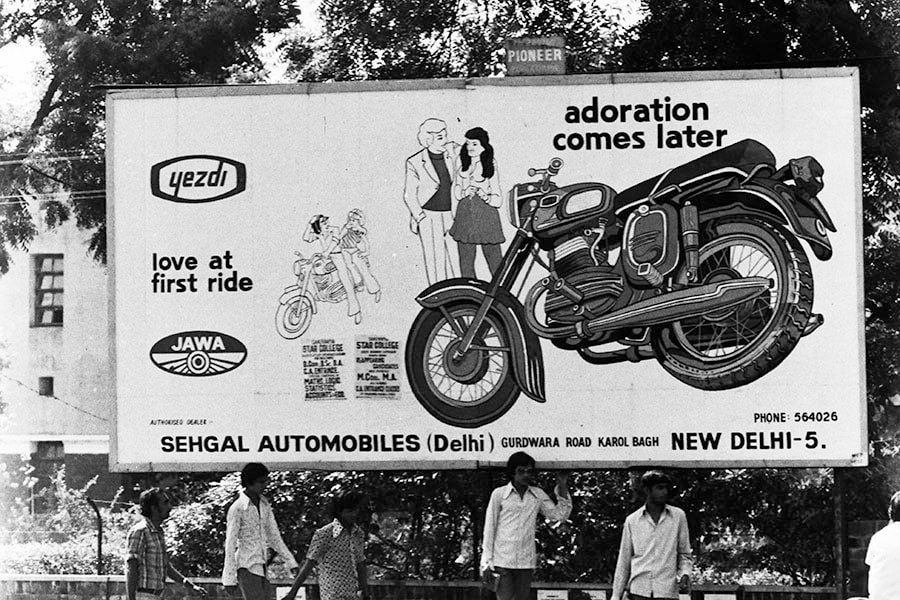 A billboard advertising Indian-made Yezdi Motobike to attract young men in central New Delhi, May 8, 1975. Ideal Jawa decided to sell motorcycles under the name ‘Yezdi’ with technical assistance from Jawa in 1971. Image: Sondeep Shankar/Getty Images
A billboard advertising Indian-made Yezdi Motobike to attract young men in central New Delhi, May 8, 1975. Ideal Jawa decided to sell motorcycles under the name ‘Yezdi’ with technical assistance from Jawa in 1971. Image: Sondeep Shankar/Getty Images The brand's tryst with India began when Rustom and Farrokh Irani set up the firm, Ideal Jawa, in Mysuru and began importing Jawa motorcycles into India in 1961. The growing demand in the country meant that Jawa established a factory in Mysuru in 1961 with support from the king at the time, Jayachamarajendra Wodeyar. Between 1961 and 1971, Ideal Jawa manufactured the 250 Type 353/04 under licence.Also read: Anand Mahindra: Rebel, leader, and master of change
Over time, the Jawa 250 emerged as a status symbol for urban youth before Ideal Jawa decided to sell motorcycles under the name ‘Yezdi’ with technical assistance from Jawa in 1971. The bikes often found their way into mainstream Hindi cinemas with heroes cruising on their Jawa and Yezdi bikes. But, over the next few decades, as competition grew and fuel efficiency became a norm, propelling the sale of scooters, the company saw its fortunes plummet. Then, as India’s economy opened up to global automakers, Ideal Jawa folded up in 1996.
Can it Reignite Buyers?
India is currently the world’s largest two-wheeler market, with over 15 million two-wheelers sold annually, predominantly in the commuter segment. “However, the premium segment, which Jawa and Yezdi target, accounted for just 5 percent of the total market in 2023,” says Sharma of Nomura. “Despite this, consumer interest in premium motorcycles is rising as Indian buyers shift toward vehicles that offer more than basic transportation, such as lifestyle-oriented motorcycles.”But Jawa, which had around 450 dealerships, compared to 2,100 for Royal Enfield now has a steep slope to climb, especially as customer preference often factors in post-purchase experience. “Additionally, Royal Enfield’s strong resale value is a key factor in driving customer preference,” adds Sharma. “The average Royal Enfield retains 60 percent of its value after three years compared to around 40 to 45 percent for Jawa bikes, making the latter less appealing to budget-conscious consumers.”
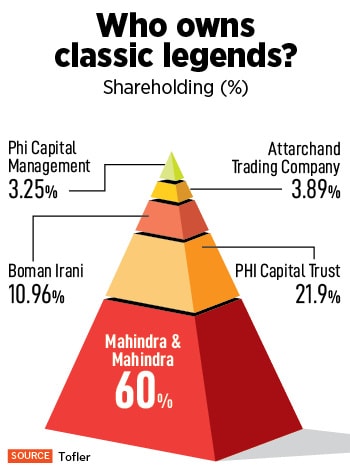
“The market is certainly there,” says Puneet Gupta, director for automotive forecasting at market research firm S&P Global Mobility. “Bigger cc bikes are in demand, and the younger population is gravitating towards buying them. But, in Jawa’s case, the competition is eating much into it. What they will need is more investments, and a clear strategy going forward with the changes underway with electric vehicle transition.”
For now, Classic Legends has readied a war chest of Rs1,000 crore of which it has spent around Rs350 crore to ramp up its marketing, distribution and global expansion over the next six to nine months. The company intends to add another 100 dealerships by Diwali. While Mahindra & Mahindra owns 60 percent of Classic Legends, Phi Capital (a private equity firm founded by Thareja) and Boman Irani hold the rest.
In the process, the gamble from Mahindra is also clear. While it is attempting to build a new brand from an old legacy, it would much rather prefer to remain a niche player in the two-wheeler market, after doubling down on its SUV focus in the four-wheeler market. That’s also a line of thinking at Mahindra, where it had exited numerous vehicle categories to focus on what it calls authentic SUVs.
“Somewhere along, the new leadership in Mahindra didn’t seem very convinced about the brand and the direction it was taking,” an industry insider says. “Mahindra has been using all its resources in its passenger vehicles division, and unfortunately, Classic Legends’ growth coincided with that of Mahindra’s own turnaround.” Mahindra’s leadership had undergone a transition in 2019 with Anish Shah succeeding Pawan Goenka as MD and CEO of Mahindra group, with Rajesh Jejurikar taking over as executive director of the auto and farm sectors in 2020.Also read: Hero and Hero versus Hero: Can Hero-Harley take on Royal Enfield?
Jejurikar soon went about focusing on authentic SUVs which have been instrumental in Mahindra’s emergence as India’s fourth largest automaker, with its products such as Thar, XUV700 and Mahindra Scorpio selling in large numbers.
“Mahindra’s decision to avoid the commuter segment, where motorcycles priced between Rs40,000 and Rs70,000 dominate the market with 90 percent of all two-wheeler sales, is a calculated one,” says Sharma of Nomura. “The focus on niche categories—especially motorcycles in the Rs1.5 lakh to Rs2.5 lakh range—gives Classic Legends a unique position to cater to a smaller but premium audience. The Indian premium motorcycle segment is forecast to grow from 640,000 units in 2023 to 1 million units by 2027, driven by rising disposable incomes and a growing preference for leisure biking.”
Financially, that means, it could yield better margins per unit sold. Royal Enfield, which operates in the same segment, reported an Ebitda margin of 26 percent in FY24, one of the highest in the two-wheeler industry, thanks to its premium positioning. “Classic Legends could similarly achieve higher profitability if they scale operations, improve product reliability, and enhance customer service, all of which will lead to better repeat business and stronger brand loyalty,” says Sharma.
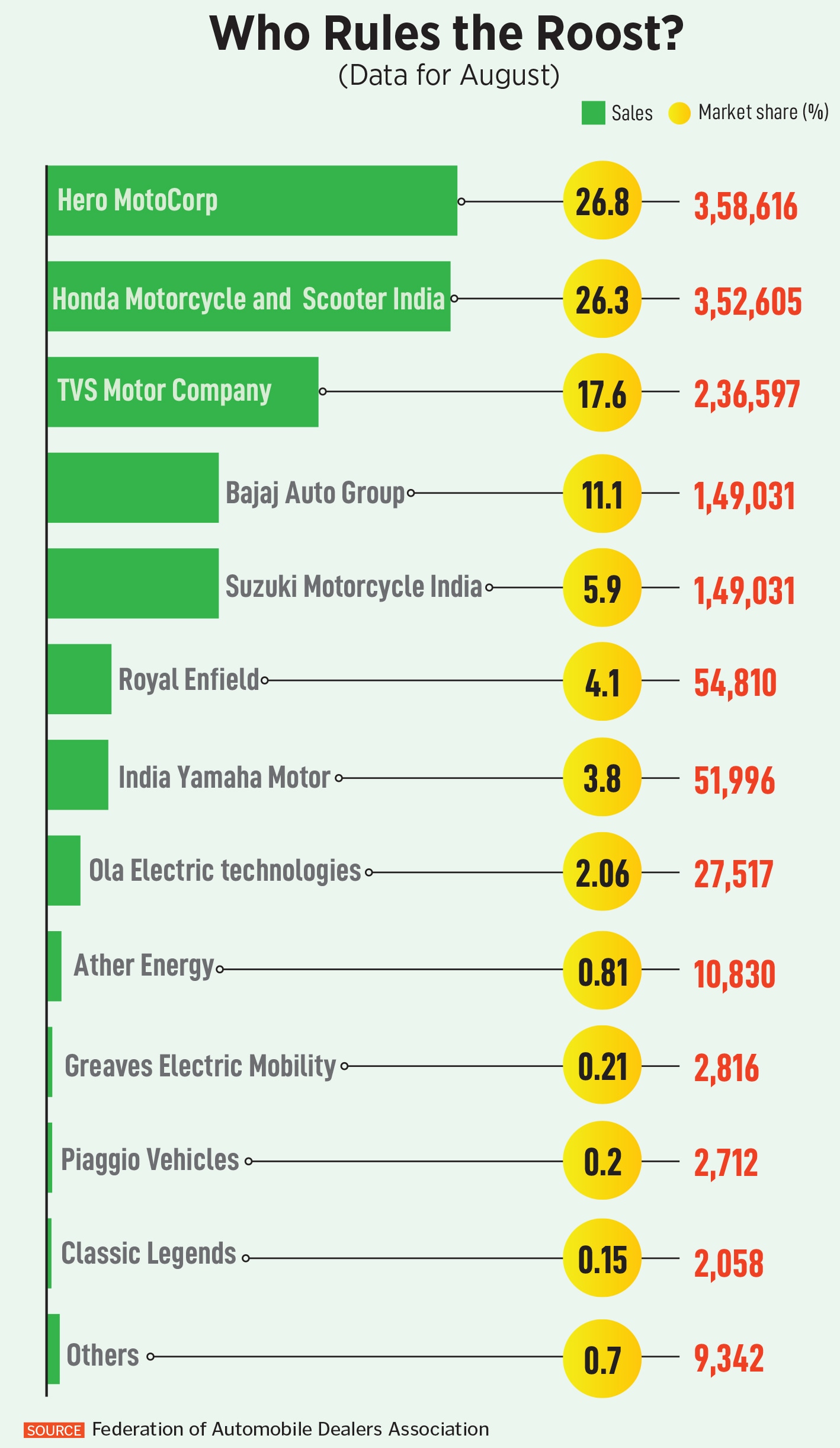
But that also means a steady focus on the export market, and in turn reducing the dependency on the domestic market. BSA currently exports to 23 countries, while that number stood at 19 for Jawa. In the process, it will also have to fight it out with new entrants such as Harley-Davidson, which has stitched up an agreement with Hero MotoCorp in 2020, allowing the Milwaukee-headquartered company to manufacture its X-440 model in India, and launch new ones.
“Classic Legends has significant potential in the premium motorcycle segment, but it needs to address operational challenges and elevate customer experiences to fully capitalise on this opportunity,” says Sharma of Nomura. “By leveraging the brand’s heritage, expanding its dealership network, and improving product quality, Mahindra could carve out a more significant share of the premium market, though competing with Royal Enfield will require a sustained, long-term effort.”
“It’s without doubt a huge brand to play on,” says Gupta of S&P. “With Mahindra’s success with pure SUVs, they might be able to identify their customer base much better and capitalise on that. It could emerge as a story like the Thar if Mahindra can work it out well.”
That’s also why, Anand Mahindra, who seldom makes an appearance at Mahindra & Mahindra’s vehicle launches, made it a point to make his presence felt at the Jawa launch, and pitch for the brand’s prospects. “When you ride the Jawa, you're telling people that you refuse to be suppressed, you refuse to be oppressed,” Mahindra said last week about the brand’s legacy. “That, you will resist. You will be a challenger.”
Perhaps, this time around, the challenger is ready for the fight, with the might of Mahindra strongly behind it.

